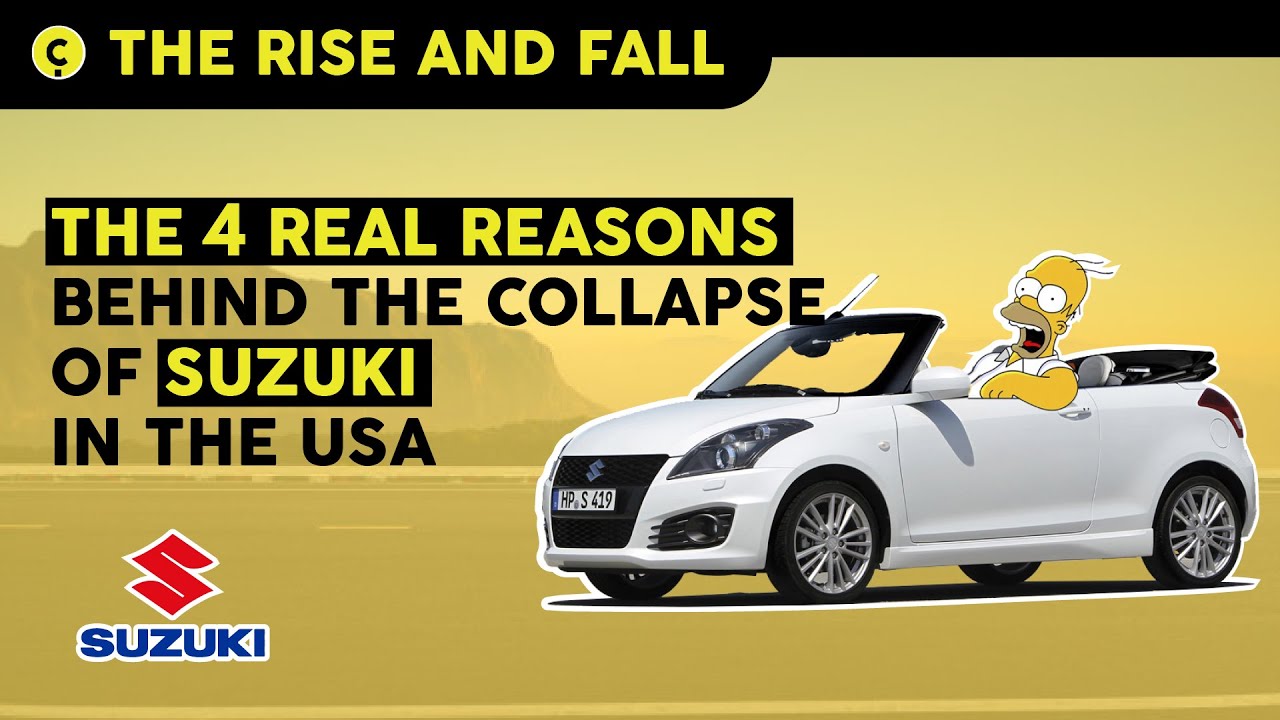Will Suzuki Comeback in 2023? The Fall of Suzuki Cars, Samurai, JIMNY | Why Suzuki Stop Making Cars

Rise and Fall and Rise Again of Suzuki: A Brief History
Suzuki Motors, a Japanese automaker, was once known for its cool compact cars and motorcycles. With a great reputation for being highly fuel-efficient and affordable, Suzuki cars were a common sight on the roads. However, in recent years, Suzuki sightings have become fewer and farther between. In fact, the company’s U.S. based operations declared bankruptcy in 2012, followed by their Canadian operation in 2013. This led to Suzuki no longer selling its vehicles in North America, which came as a surprise to many.
But despite its withdrawal from North America, Suzuki has managed to thrive. In this video, we will delve into the history of Suzuki, the scandal that led to its downfall, and the reasons behind its absence on American roads today. By the end of this article, you’ll gain insight into Suzuki’s journey and discover which countries are likely to have a Suzuki presence.
Beginnings as a Cotton Weaving Machine Manufacturer
Suzuki Loom Works was founded in 1909 in a small coastal village in Japan. Initially, the company focused on building weaving looms for Japan’s booming silk industry. For the first 30 years, Suzuki solely concentrated on developing and producing loom machines. However, the founder, Michio Suzuki, believed that diversification was necessary for the company’s growth. With consumer demand and the need for effective transportation in Japan, Suzuki decided to venture into the automobile industry. The company began designing car prototypes, but their plans were put on hold during World War II when nonessential production was halted.
Entry into the Auto Market
Suzuki’s foray into the automotive industry began in 1952 with the introduction of its first motorized vehicle, a bicycle with a clip-on engine called the Power Free. This innovative product gained popularity among Japanese consumers, and Suzuki continued to produce these bicycles until 1955 when they unveiled the Suzulight, their first car. The Suzulight marked the beginning of the minicar era in Japan and established Suzuki as a leader in small car design.
Motorcycle Presence in the United States
Suzuki’s presence in the United States initially came through its motorcycles. The company gained recognition through high-profile motorcycle races, which showcased Suzuki’s bikes and generated positive publicity. This paved the way for Suzuki’s entry into the U.S. car market. In 1963, U.S. Suzuki Motor Corp, a subsidiary, began selling motorcycles in Los Angeles. While the 1960s and early 1970s focused on motorcycles and cars for the Japanese market, Suzuki was preparing for expansion on a larger scale.
Suzuki’s Slow but Steady Expansion
Suzuki’s expansion strategy involved establishing a strong domestic base before venturing into international markets. Despite initial success in Japan, Suzuki took almost a decade before branching out to other countries. This deliberate approach allowed the company to remain relevant even after its failure in the U.S.
Challenges in the U.S. Car Market
Suzuki faced numerous challenges in the U.S. market. Despite a 5.3% equity stake in Suzuki made by General Motors in 1981, the company encountered difficulties. In 1984, Suzuki shipped its first batch of Cultus cars to the U.S., but faced limitations due to import quotas. The Japanese government only allowed 17,000 cars to be imported to the U.S. that year. Suzuki’s plans to sell cars in nine Western states, including California, were significantly hampered. This setback marked a disappointing start for the company’s U.S. operations.
The Success and Setback of the Samurai
In 1985, Suzuki introduced the Samurai, a subcompact 4-wheel drive SUV, in the U.S. market. The Samurai gained popularity among younger car buyers looking for affordable sporting and off-road vehicles. Sales soared, reaching 81,349 in 1987, despite competing against well-established American carmakers. With its attractive design features and lower price compared to a Jeep Wrangler, the Samurai was a hit.
However, in 1988, the Samurai faced a major setback. Consumer Reports claimed that the Samurai was prone to rollovers, leading to a recall and investigation by the National Highway Traffic Safety Administration. Despite the investigation’s results disproving the claims, Suzuki’s reputation had already been tarnished.
The Fallout and Rise Again
The Samurai controversy, coupled with other factors, contributed to Suzuki’s decline in the U.S. market. The company struggled to regain its footing and eventually declared bankruptcy in 2012. As a result, Suzuki ceased selling vehicles in North America.
Despite these challenges, Suzuki has managed to thrive globally. The company focuses on markets where it has a strong presence, such as India and Southeast Asian countries. Suzuki continues to produce reliable and affordable vehicles, maintaining its reputation as a leader in small car design.
In conclusion, Suzuki’s journey has been filled with successes and setbacks. From its humble beginnings as a cotton weaving machine manufacturer to becoming a prominent player in the automotive industry, Suzuki has undergone significant transformations. While its presence may be absent on American roads, Suzuki remains a thriving brand in many countries around the world.
source
